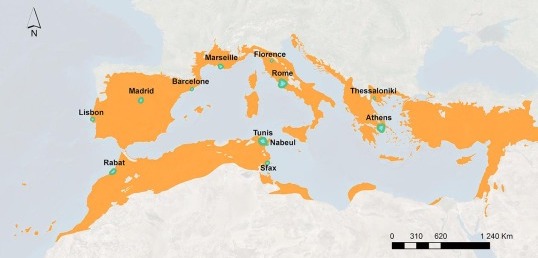
Highlights
- We assessed the impact of urbanisation on ES supply over the period 1990–2012.
- The peri-urban area of 12 Mediterranean cities in Europe and North Africa was analysed.
- Land cover data and an expert-based method were employed.
- Overall urban area increased at the expenses of decreasing agricultural land.
- Ecosystem service provided by the Mediterranean peri-urban areas was reduced.
Abstract
Urbanization is an important driver of changes in land cover in the Mediterranean Basin and it is likely to impact the supply and demand of ecosystem services (ES). The most significant land cover changes occur in the peri-urban zone, but little is known about how these changes affect the ES supply. For eight European and four North African cities, we have quantified changes in peri-urban land cover, for periods of sixteen years (1990–2006) in the Northern African, and twenty-two years (1990–2012) in the European cities, respectively. Using an expert-based method, we derived quantitative estimates of the dynamics in the supply of twenty-seven ES. The nature of land cover changes slightly differed between European and North African Mediterranean cities, but overall it increased in urban areas and decreased in agricultural land. The capacity of the peri-urban areas of Mediterranean cities to supply ES generally reduced over the last 20–30 years. For nine ES the potential supply actually increased for all four North African cities and three out of the eight European cities. Across all cities, the ES timber, wood fuel and religious and spiritual experience increased.
Given the expected increase of urban population in the Mediterranean Basin and the current knowledge of ES deficits in urban areas, the overall decrease in ES supply capacity of peri-urban areas is a risk for human well-being in the Mediterranean and poses a serious challenge for the Sustainable Development Goals in the Mediterranean basin.
